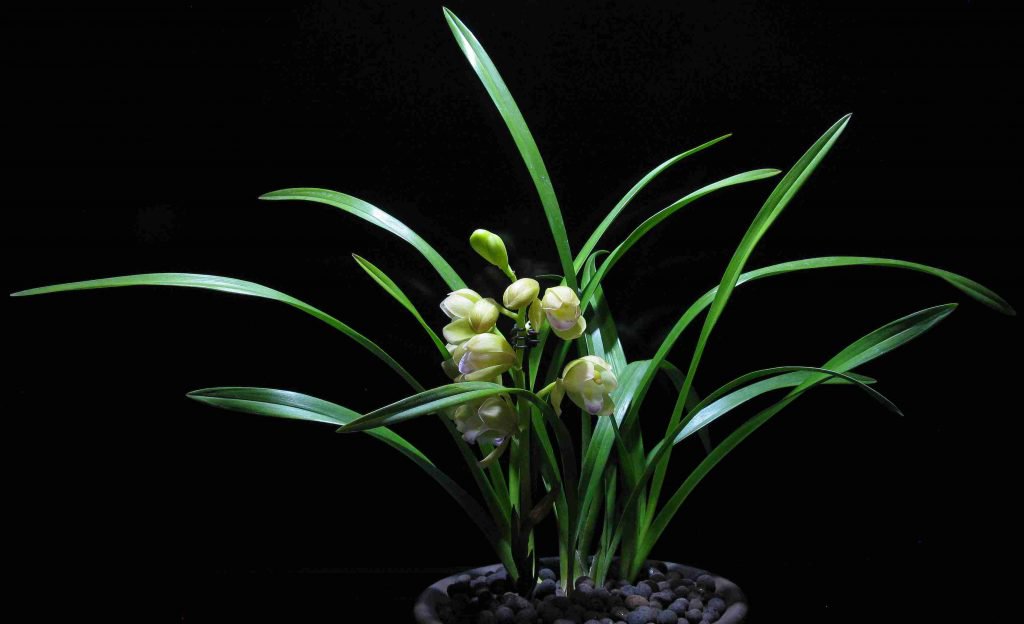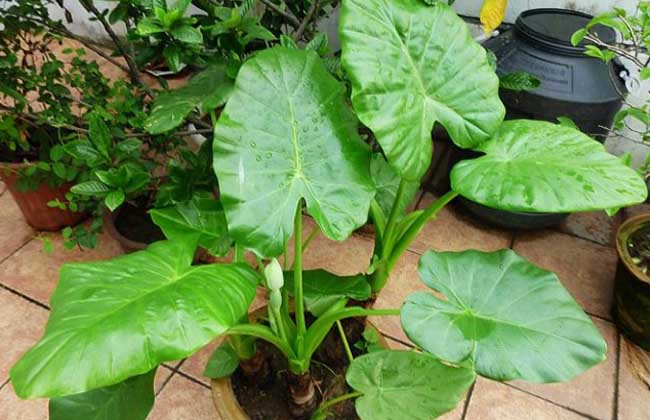What about the rotten roots of orchids? how to remedy them?
How to choose a good seed orchid matrix. Seed orchid matrix to filter water breathable, moist but not waterlogged, dry but not dry. The orchid that sells on the market now grows special material a lot of, also very applicable, if sichuan emei mountain soil, the puffed soil of chongzhou, it is very good orchid habit, much not cold-resistant, like shade, root is afraid of water wet, appropriate is rich in humus, drainage is good slight acid soil.
Analysis on the Causes of Root Rotting of Orchid

1. Environmental discomfort
Insufficient light: Different varieties of orchids require different light times, but basically they must be guaranteed for more than 4 hours. The photosynthesis of orchid plants is weak due to insufficient light or dim light, and the pot soil is not easy to dry, and the water will stay for a long time, affecting the growth of roots.
Not ventilated or too ventilated: not ventilated, the maintenance environment is too hot, watering is not easy to dry, the transpiration of the plant is also weakened; ventilation is too large, the water in the flowerpot will soon be dried, if not timely replenishment, the water stored in the roots will be slowly exhausted and gradually dry.
Humidity is not enough: Orchids like a relatively humid environment, roots also need relatively stable temperature and humidity, if too hot or too dry, will lead to orchid rotten roots.
Therefore, improve the environment and ensure proper humidity. If the orchid has been rotten and the growth state is not good, most of them are caused by too dry environment, especially insufficient humidity in summer, so we must pay attention to the control of ventilation, light and humidity.
2, watering time and method is not right
The watering time and method will change with the dry and wet conditions of the pot soil and the temperature of the four seasons. Choosing different watering methods can ensure that the pot soil is not too dry or too wet.
Therefore, it is best to water at night in summer, and the water will drip the next day, and the pot soil will not be too wet. Secondly, water to observe the growth of plants, if the growth is not good, timely change the watering method and watering amount. In addition, the temperature is too low (below 10℃) or the temperature is too high (above 30℃), do not water, otherwise the orchid plant will be damaged by frostbite or steaming.
3. Improper fertilization
Orchids are fleshy roots, and the roots store a lot of water, so there is no way to absorb high concentrations of fertilizer, especially when there are wounds in the roots, the roots will suffer from fertilizer damage, resulting in rotten roots. Therefore, when fertilizing, thin fertilizer should be applied frequently. In addition, when using fermented organic fertilizer or long-acting fertilizer, do not be too close to the roots to avoid rotten roots.
4, sick.
When the orchid plant is threatened by pests and diseases, it will cause rotten roots. In this case, we often only pay attention to the prevention and control of pests and diseases, ignoring the existence of rotten roots. Insecticides are the key, but also check whether the roots are rotten and take off the pots in time.
5. The culture medium lacks the function of water filtration and air permeability.
Water is the source of all things, orchid growth must have water in order to carry out nutrient absorption and transport, and normal metabolism. Orchids belong to aerial root plants. A small part of them is supplied by moisture in the air. Most of the water must be absorbed by the moisture contained in the cultivated substrate. Orchid roots also absorb oxygen from the pores of the substrate in the orchid basin for respiration. If the matrix in the orchid basin is poorly drained and the water content is too high, the water will fill the matrix pores, resulting in ponding phenomenon. The matrix pores are filled with water and lack oxygen. The root system is hypoxic and suffocated for a long time. The root system function is gradually lost. At this time, due to the invasion and reproduction of harmful bacteria, the root system will rot accordingly.
6. The water quality is unclean or the pH value of the water is not suitable.
Orchid water must be clean and unpolluted water. If unclean water is used, some harmful bacteria or toxins will corrode and pollute the orchid roots, causing serious diseases of roots and stems and leaves, blackening and rotting roots and death of orchid plants. Orchid water pH value must be between 5.5 and 6.5, if the pH value is lower than 5, belongs to acidic, will make the orchid root absorb nitrogen, phosphorus, potassium and other major elements are limited, orchid plant lack of major nutrients and leaves present yellowing phenomenon. In acidic environment, soil sexually transmitted pathogens such as root rot are most suitable for growth and reproduction, endangering root system and accelerating root rot and death of orchid;PH value above 8 belongs to alkaline, alkaline water and substrate will have obstacles to the absorption of trace elements required for orchid growth, and orchid roots and orchid plants will gradually die without nutrition of trace elements.
How to deal with rotten orchids
1. Select and prepare the seed orchid substrate. Seed orchid matrix to filter water breathable, moist but not waterlogged, dry but not dry. There are many special materials for orchid cultivation on the market, which are also very suitable, such as Emei Mountain soil in Sichuan, expanded soil in Chongzhou, and a variety of special soil for orchids in Guangdong. They are all very good materials for orchid cultivation. These materials can also be mixed with some rotten leaf soil to supplement the lack of fertility. Can also be locally sourced, such as weathered soil, broken brick particles, broken charcoal particles, broken oak bark, etc., mixed with appropriate amount of decayed leaf soil, the effect is also very good, both water filtration and ventilation, moisture and waterlogging, there are certain fertility. However, it should be noted that the materials used must be non-toxic, sterile, pollution-free, and parasitic, otherwise it will also bring harm to the orchid roots.
2. The water used to irrigate orchids must be clean. Contaminated water and unclean water cannot be used. There are many orchid books, stream water, river water is the most suitable orchid growth, but most orchid friends live in the city, and not professional orchid garden, according to this requirement is very difficult to achieve. With tap water irrigation orchids, the author from many years of real view, the effect is also very good, if there are conditions to put tap water bucket or basin for a few days, let the chlorine element in the water volatilize that is better. If spring water or pond water is used to irrigate orchid, attention should be paid to using PH test paper to test the base pH value, PH value is less than 5, alkaline substances such as lime can be added for adjustment, PH quality is greater than 6.5, hydrochloric acid, acetic acid, citric acid, etc. can be used for adjustment.
3, no matter what texture of the orchid basin, the bottom of the basin must have appropriate holes, there are several holes around the lower part of the basin wall is better. In short, to be able to ventilate water filtration. When planting orchids, the lower part of the orchids pot can be lined with a layer of broken bricks or charcoal particles to facilitate drainage and ventilation. Orchid basin placed, to make the bottom and basin wall of the air circulation, conditional, then available orchid shelf overhead orchid basin, so the effect is better.
Time: 2019-04-17 Click:
- Prev

What about the yellow leaves and rotten roots of dripping Guanyin?
Dripping Guanyin leaves are yellow, and the soil is dry and short of water, which is easy to cause wilting and yellowing of plant leaves. Solution: during the peak growth period from May to September, water can be watered every 2 days, and at the same time, spray more water on the plant surface to increase humidity. Dripping Guanyin drips water downward from the tip and edge of the leaf in a sufficient and humid environment.
- Next

Key points of field management of Chinese yam
Key points of field management of Chinese yam
Related
- Fuxing push coffee new agricultural production and marketing class: lack of small-scale processing plants
- Jujube rice field leisure farm deep ploughing Yilan for five years to create a space for organic food and play
- Nongyu Farm-A trial of organic papaya for brave women with advanced technology
- Four points for attention in the prevention and control of diseases and insect pests of edible fungi
- How to add nutrient solution to Edible Fungi
- Is there any good way to control edible fungus mites?
- Open Inoculation Technology of Edible Fungi
- Is there any clever way to use fertilizer for edible fungus in winter?
- What agents are used to kill the pathogens of edible fungi in the mushroom shed?
- Rapid drying of Edible Fungi

